[javascript protected email address]
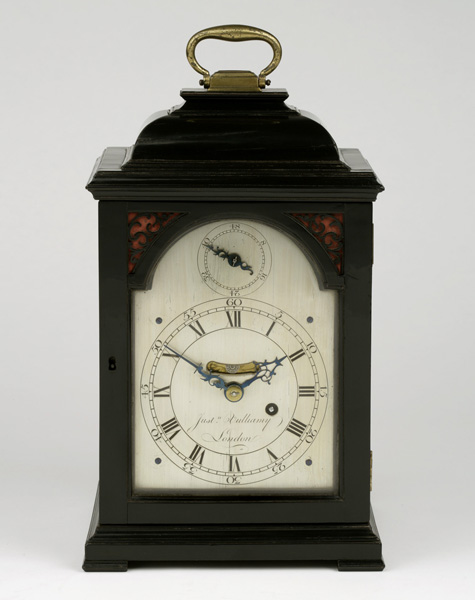
Justin Vulliamy, London

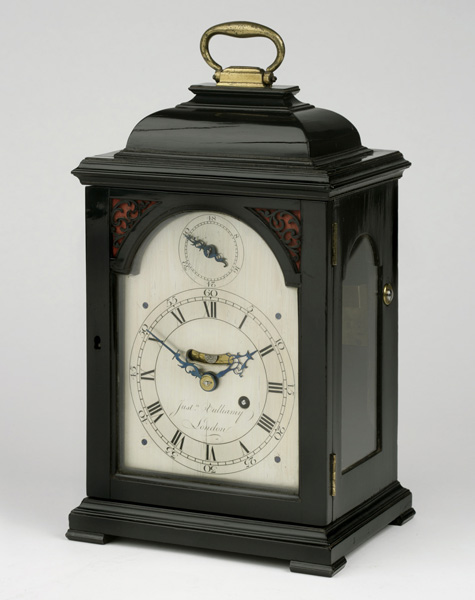
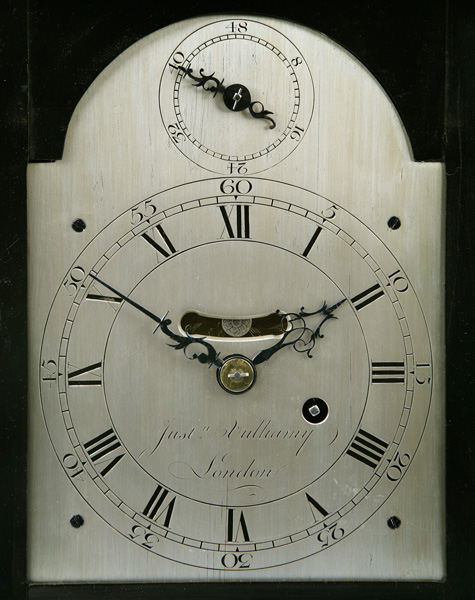
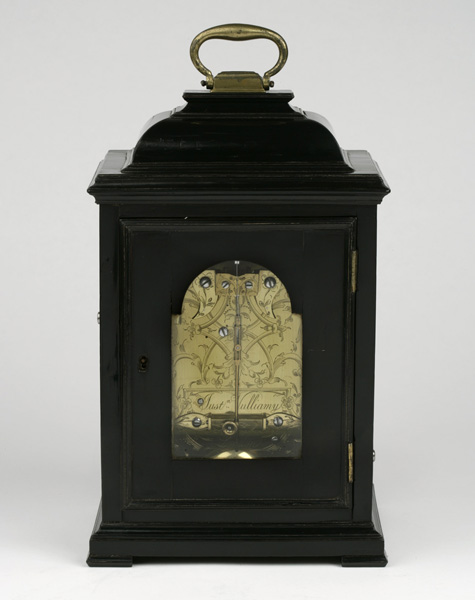
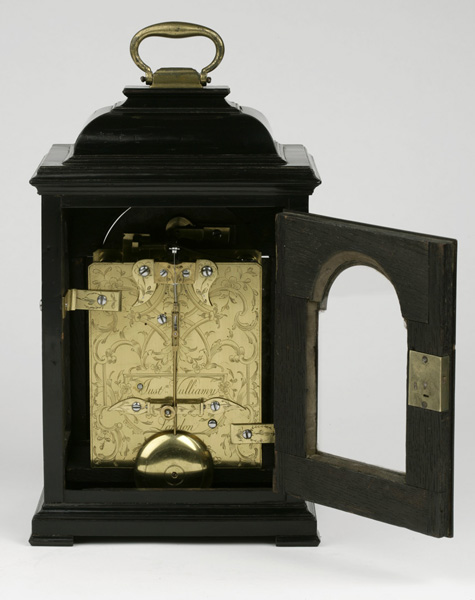
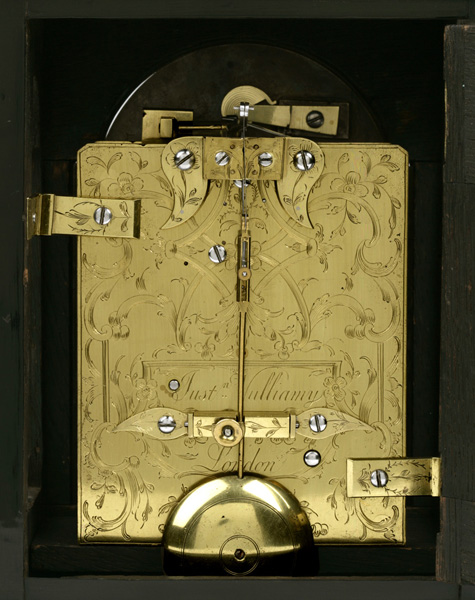
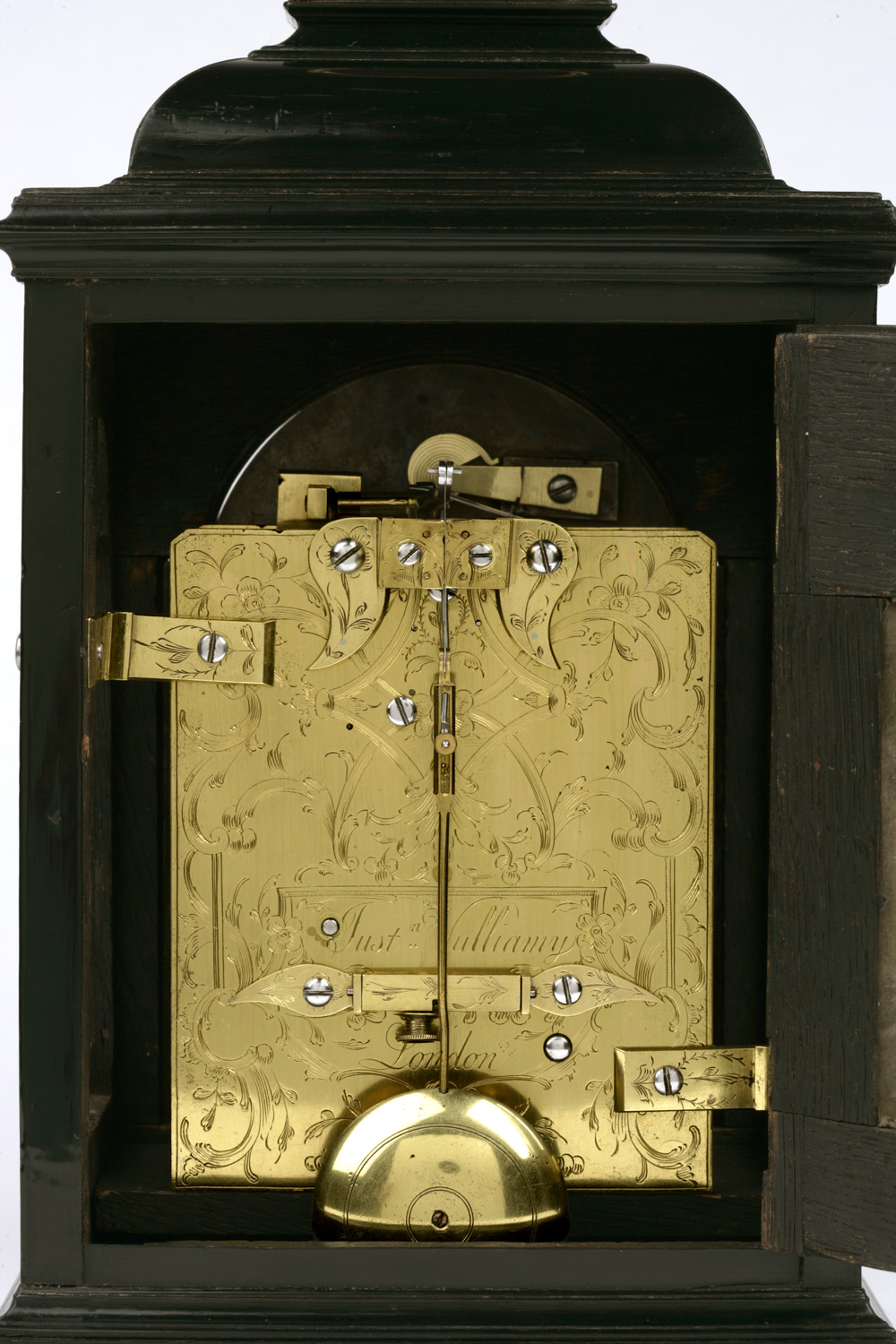
Circa 1770
Sold
12 inches high
A very pretty George III ebonised table timepiece. CASE The case with brass handle to the squat inverted bell top, glazed break-arch sides, pierced ebony frets to the front door (later silks), later brass escutcheon, the moulded base on later pad feet. DIAL 6 inch silvered breakarch dial signed Just. Vulliamy London in the centre of the Roman and Arabic chapter ring beneath a mock pendulum aperture with foliage engraved brass background. The subsidiary dial in the arch for pendulum regulation, original pierced blued steel hands. The reverse of the dial with many old clockmakers’ scratch marks (March 1837 / July 1841 / 6 May 1845 etc.) MOVEMENT The movement with thick brass plates secured by five ring-turned pillars pinned at the front plate, spring barrel, fusee, wire lines, centre, contrate and crown wheels. Original pivoted verge escapement, the original pendulum with ring-turned engraved decoration to the substantial bob, the pendulum spring suspended from a spring-loaded steel bar across the top plates and interacting with the snail cam behind the dial for pendulum regulation. The backplate is profusely engraved with foliage and flower heads in Vulliamy’s typical manner for the period. The centre of the backplate signed Just Vulliamy London within a foliate reserve – similarly engraved pendulum securing bar is secured with two tear drop cocks across the centre of the signature, on release of the pendulum the securing bar is pivoted 90% down and away from the swing of the pendulum (Vulliamy feature). The movement is secured in the case by two original foliate engraved brass brackets. THE VULLIAMY FAMILY 1730 - 1854. Justin Vulliamy Francois Justin Vulliamy was born in Switzerland and emigrated to England circa 1730. He was a man of great ability and in 1743 went into partnership with his future father-in-law Benjamin Gray of Pall Mall (c.1720-64), whose daughter he married in 1746. Gray was by that time Clockmaker to George II, having been granted the Royal Warrant in 1742. They produced clocks and watches of outstanding quality. From around 1780 Justin Vulliamy’s clocks started to be numbered. There are many fine examples of Gray and Vulliamy’s work including a watch dated 1757 in the Guildhall Museum (once owned by James Stockham, commander of the 'Thunderer' at the battle of Trafalgar). Two long case clocks in the Wetherfield Collection (Dispersed 1928), and repeating watches are also documented in the Ilbert and the Dennison collections. Benjamin Gray died in 1764 and the Royal Warrant passed to Justin Vulliamy remaining with his family for three generations until 1854. Justin Vulliamy died circa 1790. Benjamin Vulliamy The son of Justin, Benjamin Vulliamy was free of the Clockmakers Company in 1781 and continued the business, with Royal patronage, from Pall Mall. The author F.J.Britten states that he was 'much favoured and consulted by George III on mechanical subjects especially in connection with Kew observatory, which was a hobby of the King'. There were numerous clocks supplied to the Royal family, including in 1785, a very fine regulator for the King. Benjamin Vulliamy died in 1820. Benjamin Lewis Vulliamy Born in 1780, the son of Benjamin, Benjamin Lewis Vulliamy was free of the Clockmakers Company in 1809 and went into business with his father, continuing to trade from Pall Mall. He was clockmaker to George IV, William IV and Victoria. Benjamin Lewis Vulliamy died in 1854. He supplied many clocks to government offices as well as the Royal palaces. *Although the numbering of Vulliamy clocks started many years before, the first surviving record book begins with clock No. 296 delivered in 1797. They are extremely rare and important documents showing details of the makers of cases & movements, date of manufacture, as well as prices. The Vulliamys maintained good relations with favoured suppliers over a long period, with particular types of clock usually made by the same supplier. For example: '…the best eight day spring clock with quarter chimes' (bracket clock). Jackson of Chapel Row, Spa Fields made many of these movements, while most of the cases were by Rich of Lincoln's Inn Fields. The price of these clocks in 1815 was 36 guineas.
